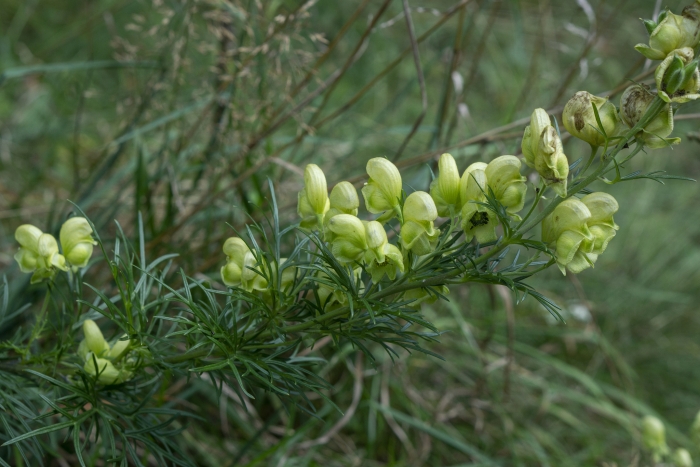Yellow Monkshood
(Aconitum anthora)
Yellow Monkshood (Aconitum anthora)
/
/

Conrad Altmann
CC BY 4.0
Image By:
Conrad Altmann
Recorded By:
Copyright:
CC BY 4.0
Copyright Notice:
Photo by: Conrad Altmann | License Type: CC BY 4.0 | License URL: http://creativecommons.org/licenses/by/4.0/ | Rights Holder: Conrad Altmann | Publisher: iNaturalist | Date Created: 2019-08-30T14:07:27-07:00 |



















































Estimated Native Range
Summary
Aconitum anthora, commonly known as Yellow Monkshood, is a deciduous perennial herb native to mountain meadows and subalpine zones in Central and Eastern Europe, as well as Western Asia. It typically grows to a height of 2-3 feet (0.6-0.9 meters) and a width of 1 foot (0.3 meters). This plant features distinct helmet-shaped yellow flowers that bloom in the summer and early fall, which are less common than the blue or purple flowers of other Aconitum species. The foliage is deeply divided and palmate, adding to its ornamental value.
Yellow Monkshood is valued for its unique flower color and is often used in border plantings, woodland gardens, and as part of a naturalistic planting scheme. It prefers moist, well-drained soils rich in organic matter and can tolerate part shade, making it suitable for dappled sunlight conditions under trees. While it is relatively low-maintenance, it is important to note that all parts of the plant are highly toxic if ingested. Gardeners should handle it with care, especially around children and pets. Due to its toxicity, it is rarely bothered by deer and other herbivores. There are no major disease problems, but it can be susceptible to crown rot in overly wet conditions.CC BY-SA 4.0
Yellow Monkshood is valued for its unique flower color and is often used in border plantings, woodland gardens, and as part of a naturalistic planting scheme. It prefers moist, well-drained soils rich in organic matter and can tolerate part shade, making it suitable for dappled sunlight conditions under trees. While it is relatively low-maintenance, it is important to note that all parts of the plant are highly toxic if ingested. Gardeners should handle it with care, especially around children and pets. Due to its toxicity, it is rarely bothered by deer and other herbivores. There are no major disease problems, but it can be susceptible to crown rot in overly wet conditions.CC BY-SA 4.0
Plant Description
- Plant Type: Herb
- Height: 2-3 feet
- Width: 0.667-1 feet
- Growth Rate: Moderate
- Flower Color: Yellow
- Flowering Season: Summer, Fall
- Leaf Retention: Deciduous
Growth Requirements
- Sun: Full Sun, Part Shade
- Water: Medium
- Drainage: Medium, Slow
Common Uses
Bee Garden, Bird Garden, Butterfly Garden, Deer Resistant, Hummingbird Garden, Rabbit Resistant
Natural Habitat
Mountain meadows and subalpine zones
Other Names
Common Names: Anthora, Healing Wolfsbane, Gul Stormhatt, Borets Protivoyadnyĭ
Scientific Names: , Aconitum anthora, Aconitum anthora var. jacquinii, Aconitum anthora var. eulophum, Aconitum pseudanthora, Aconitum anthora var. inclinatum, Aconitum anthora var. jacquinianum, Aconitum anthora f. jacquinii, Aconitum anthora f. collinum, Aconitum anthora var. atrovirens
GBIF Accepted Name: Aconitum anthora L.